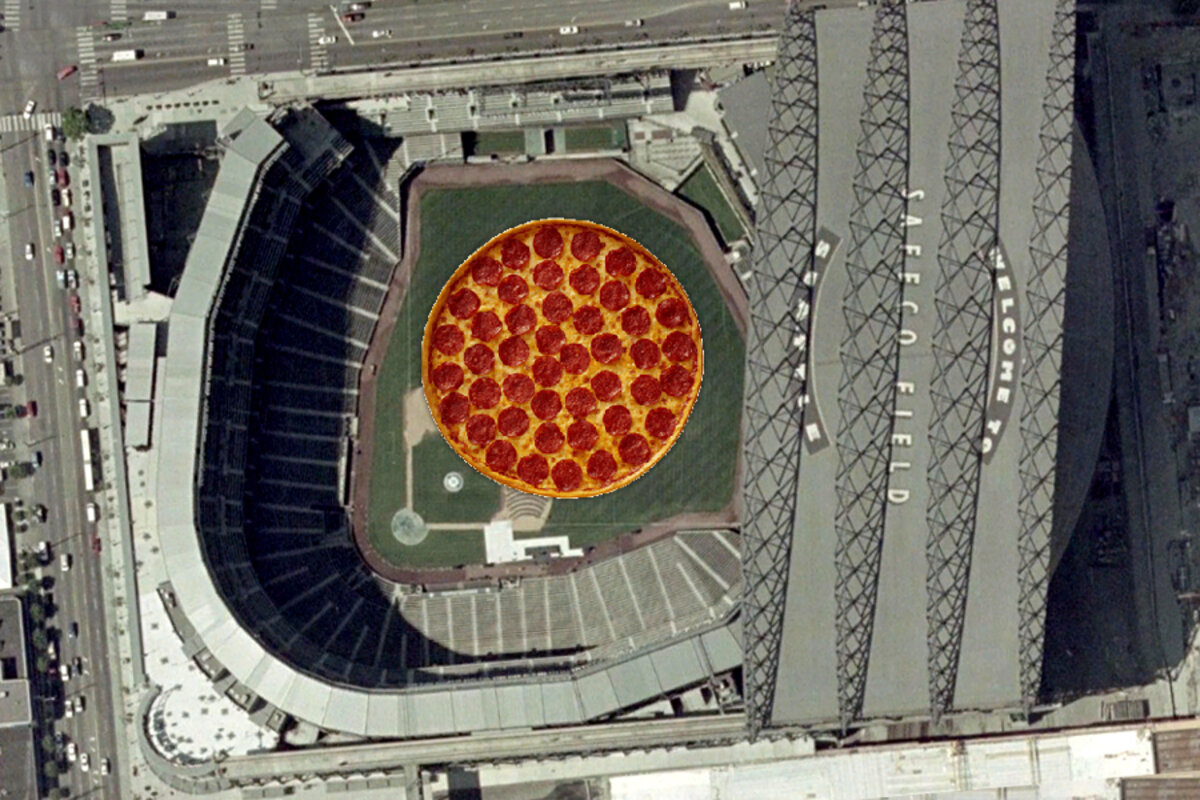Pi Day pizza: How big would this pizza be with $85,000 in shredded mozzarella?
Loading...
A trailer containing an estimated $85,000 worth of shredded mozzarella cheese was discovered missing on Sunday from a parking lot near Summerfield, Fla.
According to the Ocala Star Banner, the trailer, which was bound for the Hungry Howies Pizza distribution center in nearby Lakeland, was sitting unattached in the parking lot Saturday night. Thieves likely detached a Kenworth hauler from an empty trailer in the same lot and used it to make off with the cheese.
Why steal a truckload of shredded mozzarella? Obviously, the only reasonable conclusion is that the thieves plan on making an enormous pizza, no doubt to celebrate Pi Day.
But this, of course, raises further questions, namely: How big would this pizza be?
Let's do the math. According to this handy table from the University of – where else? – Wisconsin, the wholesale price of mozzarella in the United States in February was $2.1972 per pound. At that price, $85,000 would buy some 38,686 lbs. of mozzarella.
By comparison, the world's largest pizza so far, a 131-foot-diameter, gluten-free behemoth baked in Rome three years ago, used 8,800 pounds of mozzarella. So, without any additional data, we know that we're likely dealing with a pie of unprecedented size.
It would be tempting to simply say that, because the thieves stole 4.4 times as much mozzarella as was used for Ottavia – that's what those record-setting Italian chefs named their pizza, for some reason – then it will be 4.4 times as big, or 577 feet in diameter. But, perhaps unfortunately for us humanities majors, circles don't work that way.
As you may remember from geometry classes, a circle's area is equal to pi times the square of the radius. Ottavia has a radius of 65.5 feet, giving it an area of 13,478 square feet. With 8,800 lbs. of mozzarella, that gives Ottavia a shredded mozzarella population density of 0.65 pounds of per square foot.
This density seems more or less consistent with normal-sized pizzas. Kraft, who, it should be noted, really wants you to consume their cheese, offers a recipe for a tomato and basil pizza that calls for putting 8 oz. of shredded mozzarella on a 14-inch-by-six-inch crust, leaving a density of 0.85 lbs. per square foot. Their fellow purveyors of shredded pressed-milk-curd, Sargento, calls for a pound of their mozzarella on a 16 inch circular pizza, a density of 0.71.
One of the largest pizzas commercially available is baked by the California chain Big Mama's & Papa's Pizzeria (they're the ones Ellen DeGeneres called for the Oscars last year). The Giant Sicilian is 54 inches by 54 inches – just over 20 square feet – and is topped with 12 lbs. of mozzarella, for a density of 0.58.
Of course, we don't know the mozzarella density of the giant pizza that the thieves plan on making for Pi Day, so, from this point onward, we may have to make some assumptions.
If we suppose that our thieves are sticking to an Ottavian density of 0.65. That would mean 38,686 lbs. of mozzarella would cover an area of 59,517 feet, resulting in a pizza with a diameter of just over 275 feet, easily the world's largest.
Here's what it the pizza would look like if it were dropped on Seattle's Safeco Field.









